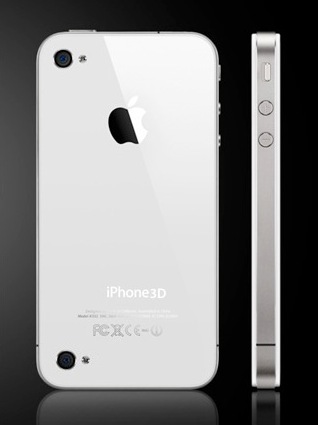Apple's filed a bumper crop of patents recently, and some of them hint at pretty neat features in future iDevices. Let's have a look at what may (or may not--Apple patent spotting is always a strange game) pop up in future iPhones and Macs.

Three-dimensional stereographic photos
3-D photography has been around for almost as long as photography itself, but it's having a big renaissance now with digital cameras and smartphones. Andhere's Apple's take on the task--a dual-camera hardware approach that is a "paradigm shift from the known software-based approaches" that currently have to "guess" at how to interpolate the images from two different camera angles into a three-dimensional representation. Apple will instead apply a hardware-based approach that has a "deterministic calculation for stereo disparity compensation." Apple's talking hard-coded super-fast math here.
So a future iPhone might sport dual rear-facing cams; if that's the case, we'd expect a 3-D glasses-free display on the front.
Battery backed-up power bricks

Apple's power bricks have always been more elegant than many competitors' black, ugly, bulky efforts (a strange thing to say about such a utilitarian object, but then this is Apple with a penchant for end-to-end design we're talking about). A new patent suggestsApple's been taking a leaf out of HyperMac's book--the firm used to sell battery extender packs for Macs that used MagSafe connectors to give you more computing time when on the road, but then Apple's legal team got on the case. Now Apple's realized that a little emergency battery reserve could be useful, and that a more elegant way to effect the same solution is to put a battery in the power brick because it's something you carry with you anyway, and such a system wouldn't need to to lug an extra peripheral in your bag.
And how about trickle top-up charges for that battery from a built-in solar cell? Makes good sense.
Spaces on iPad
There's not much more to say on this one than to ask you to consider how Apple's useful implementation of multiple desktops on Macs (dubbed Spaces) might transform the user experience on an iPad--which is thus far carefully configured as a one-screen/one-app-at-a-time device. It could really turn the iPad into a very useful productivity device, andApple's patented several aspects of the design, including advanced gestural controls to switch between working spaces.

Smart automated haptics
Haptics is the science of physical feedback from devices--something we've all experienced in a limited way with the vibrators in our phones. Apple's been looking at how these silent alert systems could be given a serious boost with technology that makes them smarter. One implementation is in a feedback-driven system that could make gaming much more fun, as it would use the iPhone's accelerometers to work out how you're interacting/resisting the haptic vibrations that a particular game is putting out (think the sensation of a skidding wheel in a racing game).
A second piece of innovation in Apple's patents suggests super-smart system-wide use of haptics to get a message through to the iPhone owner in a manner that's fitting to the environment the phone finds itself in. For example, a combination of dim ambient light sensing, zero movements, and quiet microphone inputs with a consistent low level background noise of talking could be interpreted as the phone lying in a bag during a business meeting or classroom lesson--the phone could switch itself automatically into soft vibrate mode. If the phone's sensors say it's in a bag, with you walking along in a high background noise environment, it may switch to a more noticeable alert mode with strong vibrations and loud ringtones to get your attention. A super-smart version could have multiple vibration motors inside, and the phone would choose the ones that vibrate a user's bag or pocket the most.
No comments:
Post a Comment